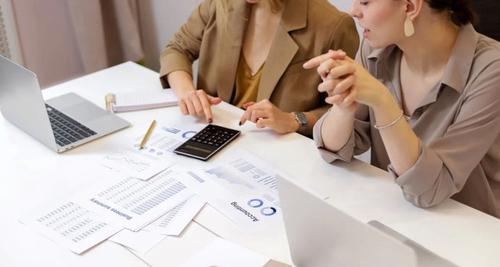H&R Block’s $1.5 Billion Buyback: What It Means for Shareholders and Market Sentiment
H&R Block’s (HRB) $1.5 billion share buyback program, announced alongside a robust fiscal fourth-quarter earnings report and a 17% dividend hike, is poised to significantly enhance shareholder value. This initiative reflects the company’s confidence in its financial health and future growth prospects, and it is expected to positively impact earnings per share (EPS), stock price, and overall market sentiment. However, the program also carries potential risks and challenges that need to be carefully managed.
Introduction
Financial Performance and Market Reaction
H&R Block’s recent financial performance has been impressive, with the company reporting revenue of $1.06 billion for the fourth quarter, slightly up from $1.03 billion year-over-year. Adjusted EPS for fiscal 2024 stood at $4.14, reflecting a 16% increase. The company’s optimistic guidance for fiscal 2025, projecting adjusted EPS of $5.15 to $5.35 on revenue between $3.69 billion and $3.75 billion, further underscores its strong financial health.
Following these announcements, H&R Block’s shares surged by 18% to $67.86, marking a 39.6% increase year-to-date. This positive market reaction indicates strong investor confidence in the company’s strategic initiatives, including the buyback program and dividend hike.
Share Buyback Program: Mechanism and Implications
The $1.5 billion share buyback program replaces the previous authorization and allows H&R Block to repurchase up to 16.7% of its outstanding shares. In fiscal 2024, the company repurchased approximately 8.0 million shares, or 5.5% of its outstanding shares, at an average price of $43.66, totaling $350 million.
Enhancing Shareholder Value The primary objective of the buyback program is to enhance shareholder value. By reducing the number of shares outstanding, the company can increase its EPS, making the stock more attractive to investors. Additionally, the buyback program signals the company’s confidence in its financial health and future growth prospects, which can further boost investor sentiment and stock price.
Dividend Increase Alongside the buyback program, H&R Block announced a 17% increase in its quarterly dividend to $0.375 per share, effective October 3, 2024. This marks the seventh consecutive annual increase in the dividend, reflecting the Board’s confidence in the company’s strategy and future prospects. The dividend hike, combined with the buyback program, underscores H&R Block’s commitment to returning value to shareholders.
Market Sentiment and Analyst Opinions
The market reaction to H&R Block’s announcements has been overwhelmingly positive, with the stock soaring by 17.4% to $67.48, reaching a peak of $68.23. Options trading activity was notably high, indicating strong bullish sentiment among traders.
Analyst opinions on H&R Block’s buyback program and overall financial health are mixed. While Goldman Sachs rated the stock a “sell” with a price target of $44.00, StockNews.com upgraded it from “hold” to “buy,” and Barrington Research maintained an “outperform” rating with a $60.00 target. These mixed sentiments highlight the varying perspectives on the company’s future prospects and the potential impact of the buyback program.
Potential Risks and Challenges
While the buyback program is expected to enhance shareholder value, it also carries potential risks and challenges that need to be carefully managed.
Opportunity Cost One of the primary risks associated with share buybacks is the opportunity cost. By allocating $1.5 billion to repurchase shares, H&R Block may be foregoing other potential investments, such as research and development, acquisitions, or debt reduction, which could generate higher long-term returns.
Market Conditions The success of the buyback program is also contingent on market conditions. If the stock price increases significantly, the company may end up repurchasing shares at a higher price, reducing the overall effectiveness of the program. Conversely, if the stock price declines, the buyback program may not have the desired impact on EPS and shareholder value.
Regulatory Environment The regulatory environment surrounding share buybacks is another potential challenge. The Inflation Reduction Act (IRA) introduced a 1% tax on corporate stock buybacks, which could impact the overall cost-effectiveness of the program. Additionally, increased regulatory scrutiny on buybacks could lead to further restrictions or taxes in the future.
Actionable Insights and Recommendations
Based on the analysis, the following actionable insights and recommendations are proposed:
Strategic Timing of Buybacks H&R Block should strategically time its share repurchases to maximize the impact on EPS and shareholder value. By monitoring market conditions and stock price movements, the company can optimize the timing of buybacks to ensure the most cost-effective repurchases.
Balanced Capital Allocation While the buyback program is a positive step towards enhancing shareholder value, H&R Block should also ensure a balanced capital allocation strategy. This includes investing in growth initiatives, such as expanding its digital tax preparation services, exploring potential acquisitions, and reducing debt to maintain financial flexibility.
Transparent Communication Transparent communication with investors is crucial to maintain confidence and support for the buyback program. H&R Block should provide regular updates on the progress of the buyback program, its impact on financial performance, and any changes in strategy or market conditions that may affect the program.
Monitoring Regulatory Changes H&R Block should closely monitor regulatory changes and potential impacts on its buyback program. By staying informed about new regulations and taxes, the company can proactively adjust its strategy to mitigate potential risks and ensure compliance.
Conclusion
H&R Block’s $1.5 billion share buyback program, announced alongside strong fiscal fourth-quarter results and a 17% dividend hike, is expected to significantly enhance shareholder value. The program reflects the company’s confidence in its financial health and future growth prospects, and it has already positively impacted market sentiment and stock performance.
However, the buyback program also carries potential risks and challenges, including opportunity costs, market conditions, and regulatory changes. By strategically timing buybacks, ensuring balanced capital allocation, maintaining transparent communication, and monitoring regulatory changes, H&R Block can maximize the benefits of the buyback program while mitigating potential risks.
Overall, the buyback program, combined with the dividend increase and strong financial performance, positions H&R Block well for future growth and value creation for shareholders.


